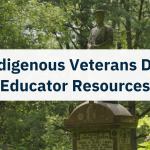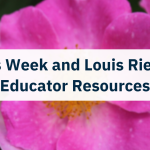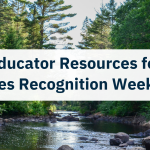National Indigenous Languages Day
Every year on March 31, Canada celebrates National Indigenous Languages Day. This day recognizes and honours the more than 70 Indigenous languages from 12 distinct language families spoken in Canada.
In the last census, 189,000 people reported speaking an Indigenous language as their first language at home, and 237,420 Indigenous people reported speaking an Indigenous language well enough to conduct a conversation. These statistics indicate that many people are learning Indigenous languages as a second language. Learning a second language, however, is a lifelong undertaking that takes dedicated practice and attention.
Supporting Indigenous language learning is integral to Canada’s truth and reconciliation process and is the focus of Calls to Action 13–17 released by the Truth and Reconciliation Commission. This blog post highlights some of the ways Indigenous communities are encouraging students to learn their language and provides some suggestions for supporting second-language learning in your classroom!
How does language learning happen in Indigenous communities?
Indigenous-run schools in many communities employ language speakers to teach students their language as part of the curriculum. In many cases, these language classes are the only way Indigenous youth can learn and access their language. Because of the ubiquity of English and the disruption of natural language transmission, many families don’t speak their language at home.
Consider trying these strategies to create supportive language-learning environments in your school:
1. Focus on Content-Based Instruction.
Learning grammar rules can help students understand how a language works. However, too much focus on grammar often leaves students disinterested in their learning. This approach also positions language as something you learn about instead of something valuable to your everyday life. Teaching language through a topic more closely mimics natural language acquisition, which always occurs in context and is never divorced from meaning. Language skills increase when students learn about a topic, because it emphasizes relevant, meaningful, and complex content, rather than focusing on the language itself.
2. Teach Survival Phrases.
Survival phrases are basic phrases and vocabulary that people use in their day-to-day lives. Some classroom survival phrases include greetings and farewells, asking to use the restroom, getting a drink, and asking for items like pencils, pens, and paper. Survival phrases give students more practical opportunities to use their language skills.
3. Create Immersion-like Environments.
One of the most significant barriers for second-language learners is having places to practice their oral language skills. You can increase students’ opportunities to practice language skills by working with a language teacher to integrate language use across other subjects. For example, having other teachers learn similar survival phrases can increase their use across various classes, while having math teachers prompt students to say numbers in their language can help students practice using different vocabulary.
How can I support Indigenous languages as a non-Indigenous person?
Even if you don’t speak an Indigenous language, there are things you can do to highlight, support, and promote Indigenous languages in your classroom.
- Use Native Land Digital to identify whose ancestral territory you occupy. Then, search for online resources that might help you learn a simple greeting or basic conversational terms in the language(s) local to your area.
- Invite a language speaker to teach simple greetings or phrases in your classroom. If you’re unsure who to invite or if no one in your network knows an Indigenous language, consider contacting a Friendship Centre in your area and asking if someone would be interested in coming to your classroom. Remember to follow proper Protocols to compensate them for their time in your classroom. Ensure you ask what these Protocols are.
- Make your classroom bilingual, even if you’re not! Language teachers often transform their classrooms into language nests. Follow their lead, and do the same! If you have numbers on a bulletin board, add their translations in one (or more!) of the languages local to your area. Each week, highlight a different Indigenous language from your local area or farther afield.
Where can I learn more?
Explore the following resources to learn more about Indigenous languages in Canada.
- FirstVoices is a platform run by the First Peoples’ Cultural Council in British Columbia. It’s an interactive platform where Indigenous communities manage, curate, and share their languages. Explore this website with your students, and encourage them to learn more about an Indigenous language in Canada.
- Learncree.ca is a Cree language-learning website run by the Lac La Ronge Indian Band in Saskatchewan. Try learning some Cree words with your students!
- The Indigenous Languages Revitalization website is run by the Indigenous Leadership Development Institute Inc. This site highlights different communities, groups, organizations and individuals working with Indigenous language revitalization. The linked page contains some sample activities and lesson plans you can try.
What strategies do you use to support language learners? Share your ideas for integrating Indigenous languages in your classroom! We’d love to hear from you!
Image: Still from the Native Land Digital interactive territories, languages, and treaties map.







